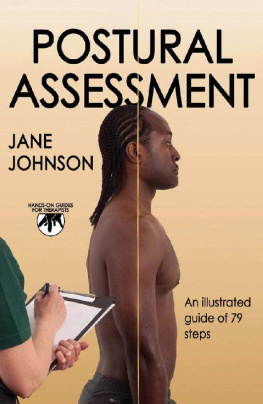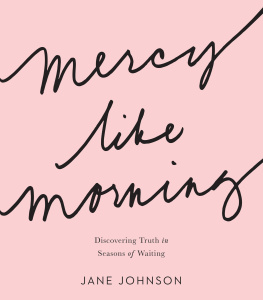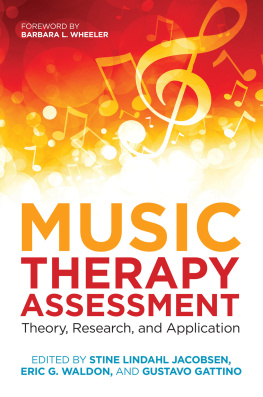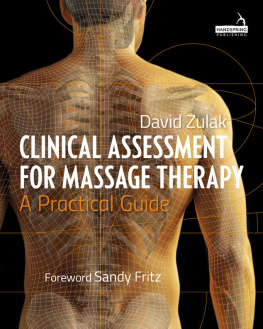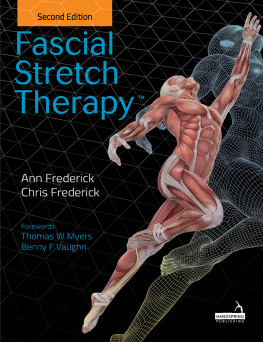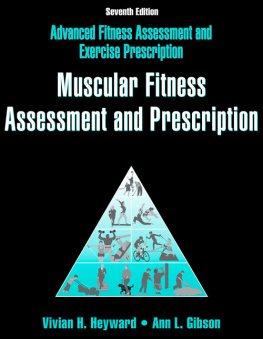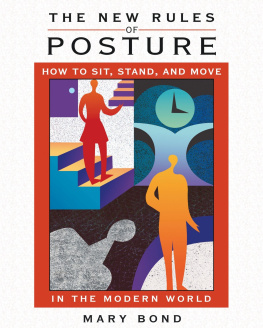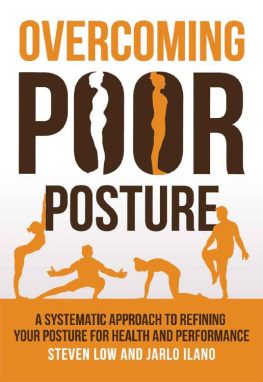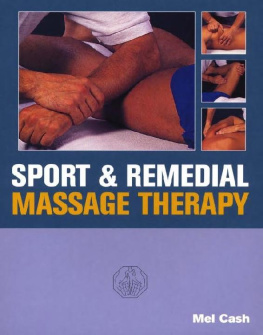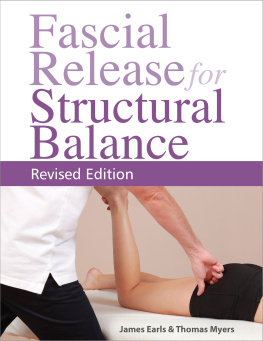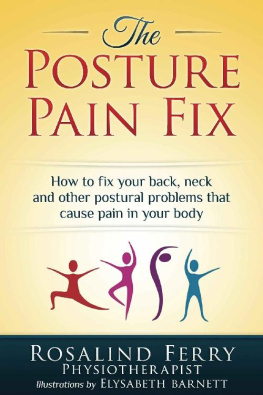Jane Johnson - Postural Assessment
Here you can read online Jane Johnson - Postural Assessment full text of the book (entire story) in english for free. Download pdf and epub, get meaning, cover and reviews about this ebook. year: 2011, publisher: Human Kinetics Publishers, genre: Romance novel. Description of the work, (preface) as well as reviews are available. Best literature library LitArk.com created for fans of good reading and offers a wide selection of genres:
Romance novel
Science fiction
Adventure
Detective
Science
History
Home and family
Prose
Art
Politics
Computer
Non-fiction
Religion
Business
Children
Humor
Choose a favorite category and find really read worthwhile books. Enjoy immersion in the world of imagination, feel the emotions of the characters or learn something new for yourself, make an fascinating discovery.
- Book:Postural Assessment
- Author:
- Publisher:Human Kinetics Publishers
- Genre:
- Year:2011
- Rating:5 / 5
- Favourites:Add to favourites
- Your mark:
Postural Assessment: summary, description and annotation
We offer to read an annotation, description, summary or preface (depends on what the author of the book "Postural Assessment" wrote himself). If you haven't found the necessary information about the book — write in the comments, we will try to find it.
Jane Johnson, a practicing physiotherapist and sport massage therapist and instructor, breaks down the complex and holistic process of assessing posture into easy-to-assimilate sections. Johnson begins with a discussion of ideal posture and the factors affecting posture as well as how to provide the correct environment for postural assessment, necessary equipment, and the importance of documenting assessment findings. Then she details procedures for executing postural assessments from standing posterior, lateral, and anterior views as well as with the patient or client in a seated position.
The text features tips for improving assessment technique, and What Your Findings Mean sections provide readers--students in particular--with guidance for systematic analysis. Each chapter ends with five Quick Questions, with answers, to assist in gauging understanding of the topics covered.
Information in the text is enhanced with detailed illustrations that offer visual cues to learning postural assessment and identifying anatomical relationships. Line drawings illustrate bony landmarks used in the assessments, and numerous photos show both obvious and subtle postural variations. Reproducible illustrated postural assessment charts in the appendix provide space for recording observations during each step of the assessment.
Postural Assessment can assist practitioners in learning what posture reveals about the relationships among various body parts and in determining whether such relationships cause or contribute to pain or discomfort. As a resource for novices, Postural Assessment offers guidance in observing and identifying common postural forms and interpreting those observations.
Postural Assessment is part of the Hands-On Guides for Therapists series, which features specific tools for assessment and treatment that fall well within the realm of massage therapists but may be useful for other body workers, such as osteopaths and fitness instructors. The guides include full-color instructional photographs, Tips sections that aid in adjusting massage techniques, Client Talk boxes that present ideas for creatively applying techniques for various types of clients, and questions for testing knowledge and skill.
Jane Johnson: author's other books
Who wrote Postural Assessment? Find out the surname, the name of the author of the book and a list of all author's works by series.

